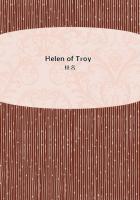The great wars, which followed the invasions of the sixth century, and the long duration of military expeditions, depressedthe class of freemen. Many of them, to escape the demands and exactions of the counts and lords, who often despoiled themby open force, (5) sold their property, or surrendered it, either to the sovereign or the Church, and received it back under thetitle of censive land, that is to say, subject to the payment of a rent. The class of small free proprietors thus insensiblydecreased. From as early as the time of Charlemagne, inequality and the accumulation of property in a few hands were verygreat; the dependent peasants were no longer in a position to defend the domain of the mark with any success against theinvasion of their powerful neighbours, who compelled the peasants to allow that the eminent domain of the waste and forestbelonged to them. The law of the Ripuarians, Tit. 76, already speaks of the common forest as belonging to the sovereign: insilva communi seu regis . In a Merovingian charter of 724, Childebert III. disposes of the communal lands of Saverne. Thelords had the forests enclosed; or else declared them bannforsten , that is, forbade the cultivators the use of them. Theirprincipal object was to preserve them for hunting. These usurpations commenced under the Frankish dynasties, but wereespecially common in the twelfth and thirteenth centuries. The law of 1861, abolishing serfage in Russia, also takes awayfrom the peasants, with a stroke of the pen, the hereditary right of use of the forest, transferring the exclusive property to thelord. At first the sovereigns did not dispose of such property without the consent of the people, but later on they dealt withit on their own personal authority.
Originally, all the inhabitants of the village assembled to try debts and suits between the members, under the presidency of achief elected by them, the dorfgraf (count of the village, also called judex or major loci , centenarius , tunginus ). The lord,however, in almost every case, gradually usurped the right of nominating the judge or mayor of the village, the dorfrichter or schuttheiss . As Von Maurer says, wherever seignorial rights were established, the ancient organization of the mark and itsliberties disappeared. Seignorial justice took the place of judgment given by the assembly of villagers. At first, the lord'srepresentative continued to summon the inhabitants round him to pass judgment; later on, he pronounced it by himself. The mark , which was originally a small independent republic, was thus reduced, by the successive usurpations of the feudal lordsand the sovereigns, to nothing more than the collective enjoyment of communal forest and pasture, in cases where they hadbeen respected.
The Irish Brehon Laws enable us, better than any other ancient documents, to see how inequality of property and thepredominance of the large over the ****** cultivators were established among men of the same race, in spite of the originalequality of all and the institutions designed to maintain it. These profound changes were accomplished in the same way inIreland as in Germany and the rest of Europe. Originally, the chief of the clan was merely the first among a number of freeand equal proprietors, by whom frequently he was elected. When the work of feudalization was complete, this chief wasconverted into the lord of the manor, the proprietor, in fact or in theory, of all the land formerly divided among themembers of the tribe; and the cultivators were mere rustics or serfs, bound to render payments in labour or kind, for theenjoyment of the land of which they had previously been independent owners. This transformation, which gave birth to alanded aristocracy and to political royalty, was accomplished slowly and imperceptibly, by a series of insensible changes,which varied in detail in different countries, but everywhere followed the same general lines. In the Brehon Laws Tracts , (6) which contain information concerning institutions separated by several centuries, we can trace the development of the powerand privileges of the chief. There is no doubt that, in primitive societies, the soil was regarded as the collective property ofthe tribe. The chief exercised certain administrative functions; he led his men to battle, and received as reward the enjoymentof a domain near to his dwelling-house, and some vaguely determined rights over the communal land or waste. The free menof the tribe were all proprietors on the same title as himself, and were completely independent of any authority in him. Often,however, we find the territory of the clan taking the name of the chief's family; thus, there is frequent mention of the districtof the O'Briens or Macleods. Next we see the authority of the chief increasing; the free cultivators, his equals, seek hisprotection, and become his liege-men; a certain dependence is established, similar to that which is created elsewhere by the commendatio ; and in this dependence there are various degrees. The chief increases the number of his followers, inproportion as he grows rich. Thus the power at his disposal grows with his riches, and he employs his power, in turn, toincrease his demands, and consequently his revenues. He takes advantage of the rights he has acquired over the waste landsof the tribe to establish a new class of tenants in them, who are entirely dependent upon him, and whose origin we shall seepresently. Finally, he extends his suzerainty by a means which deserves all our attention, and has not hitherto been described.















